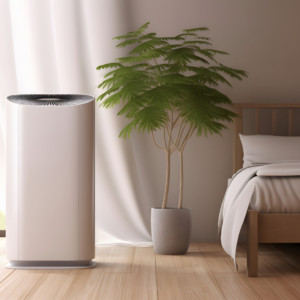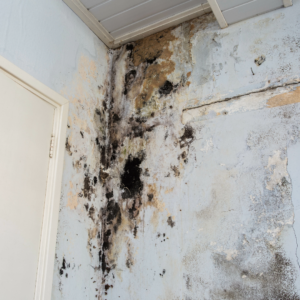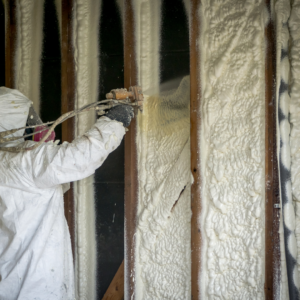3 Ways to Control Moisture in Your Home
Controlling moisture in your home is essential to prevent mold growth, protect your property, and maintain a comfortable living environment. Moisture can enter your home in various ways, including humidity, leaks, and condensation.
Here are three ways to control moisture in your home.
1. Proper Ventilation
One of the easiest ways to control moisture is through proper ventilation. Proper ventilation includes the use of exhaust fans in bathrooms and kitchens, as well as opening windows and doors to promote airflow. This helps to remove excess moisture from the air, reducing the chance of mold growth and condensation.
Consider using dehumidifiers to help maintain ideal humidity levels in your home.
 Dehumidifiers work by removing excess moisture from the air. They use a fan to pull in humid air and pass it over a cold coil, which causes the moisture in the air to condense and collect in a removable reservoir or drain through a hose. The dry air is then reheated and pushed back out into the room.
Dehumidifiers work by removing excess moisture from the air. They use a fan to pull in humid air and pass it over a cold coil, which causes the moisture in the air to condense and collect in a removable reservoir or drain through a hose. The dry air is then reheated and pushed back out into the room.
By reducing the humidity levels in a room, dehumidifiers can help prevent mold growth, reduce musty odors, and improve indoor air quality. Some dehumidifiers also have additional features such as air purification filters, automatic shut-off when the reservoir is complete, and programmable humidity settings.
When choosing the best type of dehumidifier, it’s important to consider the size of the room, the humidity level, and the features you need.
Here are some of the best types of dehumidifiers available on the market today:
Refrigerant dehumidifiers are the most common type and work by drawing in humid air over a cold coil. The moisture in the air then condenses and drips into a collection tray. Refrigerant dehumidifiers have a range of features, including adjustable humidity settings, automatic shut-off when the reservoir is full, and air purification filters.
Desiccant dehumidifiers use a desiccant material to absorb moisture from the air. They are ideal for colder climates and can operate at lower temperatures than refrigerant dehumidifiers. Desiccant dehumidifiers are also often more energy-efficient than refrigerant dehumidifiers, making them a good choice for saving energy.
Whole-house dehumidifiers are installed directly into your home’s HVAC system and can dehumidify your entire home. They are more expensive than portable dehumidifiers but more effective and require less maintenance. Whole-house dehumidifiers are also quieter than portable dehumidifiers, making them a good choice for those who want to avoid noise.
Mini dehumidifiers are small, portable, and ideal for small rooms or spaces. They are usually less expensive than larger dehumidifiers but have a lower capacity. Mini dehumidifiers are often quieter than larger dehumidifiers, making them a good choice for bedrooms or quiet rooms.
Ultimately, the best type of dehumidifier for you will depend on your specific needs and the size of your home. It’s important to do your research and compare different models to find the one that is right for you.
2. Address Leaks and Dampness
 Leaks and dampness are some of the most common causes of excess moisture in a home. Immediately addressing leaks can help prevent water from seeping into walls and floors, which can lead to mold growth and structural damage. Poor drainage leads to dampness around your home, so make sure that your gutters and downspouts are functioning correctly.
Leaks and dampness are some of the most common causes of excess moisture in a home. Immediately addressing leaks can help prevent water from seeping into walls and floors, which can lead to mold growth and structural damage. Poor drainage leads to dampness around your home, so make sure that your gutters and downspouts are functioning correctly.
Common areas in the house that have leaks include the roof, windows, doors, plumbing fixtures, and pipes. Leaks can also occur in the basement or crawl space and around the house’s foundation. Regularly inspect these areas for any signs of leaks and address them promptly to prevent moisture from seeping into walls and floors.
3. Properly Insulate Your Home
Proper insulation can help to prevent condensation from forming on walls and ceilings. Insulating your home can also help to keep your home at a consistent temperature, reducing the chances of moisture accumulating in your home. Insulate your attic, walls, and floors to protect your home from moisture.
If a home is not insulated correctly, it can lead to various problems. One of the most common problems is moisture accumulation. Moisture can accumulate on walls and ceilings, leading to mold growth and structural damage.
Improper insulation can also cause temperature fluctuations in the home, making it uncomfortable to live in—higher energy bills can result as the heating and cooling systems try to compensate for the temperature changes.
Poor insulation causes drafts and air leaks, compromising indoor air quality and thermal comfort.
Several types of insulation materials can be used in homes, including:
Fiberglass insulation is the most common type of insulation material, consisting of glass fibers that are spun into thin strands. It’s available in both batts and blown-in forms.
Cellulose insulation is typically made from recycled paper products, such as newsprint, and is treated with fire retardants. It’s often used as blown-in insulation.
 Spray foam insulation is made by mixing two chemicals that react and expand to create a foam. It’s often used in small spaces and can provide an airtight seal.
Spray foam insulation is made by mixing two chemicals that react and expand to create a foam. It’s often used in small spaces and can provide an airtight seal.
Radiant barrier insulation is made from a reflective material that reflects heat away from the home. It’s often used in attics to help keep the home cool in the summer.
Mineral or rock wool insulation is a material made from minerals like basalt and diabase, which are melted and spun into fibers. It’s often used in areas where high heat resistance is required.
Natural fiber insulation is made from natural materials like wool, cotton, and hemp. It’s often used in eco-friendly homes or for people who are allergic to synthetic materials.
Each insulation type has advantages and disadvantages, so choosing the right type for your home is important based on cost, location, and personal preferences.
Key Takeaway
Controlling moisture in your home is essential for maintaining a healthy and comfortable living space. Proper ventilation, addressing leaks and dampness, and insulating your home are just a few ways to control moisture. By taking these simple steps, you can help prevent mold growth, protect your property, and maintain a comfortable living environment.

